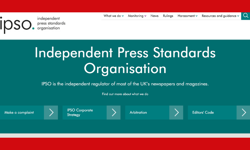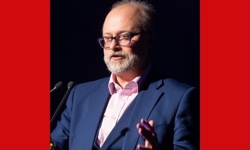‘Community’ first appeared as a word in the 14th century, derived from the Latin communitas meaning ‘Fellowship’ and / or communis meaning ‘common, public, general, shared by all or many’. In the context of specialist communities, I’ve chosen to define community as ‘Common Fellowship’.
Increasingly, the web, print in various forms, video, podcasts, radio, television, and face to face meetings are being used in combination by businesses to create an environment which fosters community in groups of its stakeholders.
The challenge is to do this well, in a manner which adds value to the community, and the business, for mutual benefit. As well as looking at some features of business to business communities, this article also looks at a case study of a business community.
The case study relates to an element of an online business network called Ecademy (www.ecademy.com) where I lead the life members’ community known as BlackStar.
Creating Community Value
Before we can talk about how to create value, we need to decide how to measure it, and even how to define it. Value is derived not just from the direct contribution, but also from the value members bring to the community; through their knowledge, skills, experience and, from their interactions in their own business and personal networks.
As a common fellowship, a community contains two elements: (1) the people in the community and their networks, and (2) what they bring to it. So community value is a combination of both network value and content value – contacts and content.
Contacts and Content
In a large community of many, perhaps millions of members – you can reach out and make contact with very talented people. The chances are that someone in the community is perfectly suited to helping with a current issue, but finding them is hard. Wouldn’t it be better if they were already seeking you out?
When we consider the people we help willingly, they are generally people we know, like and trust. We know their skills and experience, their strengths and weaknesses. They’ll have a good reputation and high credibility. When they have all these things and an opportunity to help crops up, we offer without hesitation.
So, in order to be sought out and helped by others, we need to be trustworthy, known and liked, have a good reputation, be credible and be seen to be giving as much to the community, or more, than we seek to receive from it.
Those seeking to create and build communities need to design the environment in which it operates, in a way that encourages and supports and helps members easily apply the right approach to the community. Common fellowship only appears when it is easy to build strong relationships.
When you meet people, you have just one opportunity to sell your goods or services. When they like you, when they want to help you, then they’ll talk about you to others and your opportunities are magnified. When you are THE expert – the referral becomes automatic. People stop thinking about the other people they know who could help, because they know the expert.
When the relationship is strong, you really aren’t talking just to an individual but also to all the people they know. Communities that build relationships leverage success through those relationships, in the network; they create "Network Value".
Network Value
People tend to buy products and services from people whom they trust. They trust what their friends tell them, so to build network value you need to find a way to get people that you don’t know talking about your products and services to people that trust them. Your network reach is critical.
I define the real value of your network as the extent to which people who don’t know you, are talking about you, to other people whom you don’t know.
Content Value
This is why publishing is really important. There are "lurkers" who don’t actively participate by writing. Probably, 90% of your readership will never actively engage, making it hard for you to gauge the value you are giving, yet many will be advocates and supporters.
What we publish is what people judge. Others read and comment on what we say; you may see the comments or they may be in conversation. The key thing is that many more people read than write, but they tell others about what they have read. Readers assume that writers know about what they write about, so when people write and publish about their expertise they demonstrate that they are an expert. People in a community who see one expert more often than others with the same expertise assume they have found the expert.
That creates a driver for people to write and add to the community’s content value, whilst reading the material attracts new people to connect with the author and increases the overall network value too.
Of course, a community carries risk. Bad news spreads as fast as, or faster than, good news and mistakes can be seen in the transparency of a closely connected community.
If you are creating a community, then the value people get from the knowledge in the community has to be greater than the costs of giving and the risks of providing content must be less than risk of not doing so.
Ecademy - A Case Study
Ecademy has built a great business membership organisation and online network. However, some members demanded more; they asked for the whole process to be accelerated, and as a result the BlackStar life members club was developed. Although it started as a club, it has developed "common fellowship" and become a true community.
We analysed the characteristics of the people in the community and found four types:-
* New businesses - owners who recognised their breadth of skills and experience was insufficient. This group seeks people who they can trust to provide advice and guidance about their business.
* Sales poor businesses - this group seeks to find people that they can trust who will provide them with referrals.
* Developing businesses where an established business is making a growth transition. They are searching for people they can trust to provide advice and guidance about the transition.
* Businesses with global aspirations that wish to engage in new countries and territories. They are looking for people that they trust in those other countries.
All of these groups have a common feature, people whom they trust. That’s the key.
There’s a typical cycle for buyers of new services. Firstly, the Innovators, a group excited by change; demanding ideas. Then the Early Majority, excited by the ideas; demanding proof of concept. Then the Late Majority, excited by the concept; demanding return on investment. Finally the Laggards, excited by the return on investment; wondering why they missed it. We are seeing that cycle in BlackStar too.
So, four types and main reasons for joining a community mean that community owners need to cater for 16 different needs and messages, simultaneously. There is a progression over time, but there will still be innovators in some groups arriving as the laggards in others ponder what to do.
So, what do they find when they get there? This community prides itself on a number of key values:- Confidentiality * Commonality * Collaboration * Togetherness * Education * Peer review * Business.
Critical mass
To make it self-sustaining, you need a critical mass of members, activity must be frequent and successful. Typically, online, the contribution rate in terms of adding content is recognised as around 10 to 1, and at well designed offline meetings you can expect attendance at up to 50% of the membership.
To get business you need to give business and for that to work in a dynamic way, contributors need to see success as well as referring opportunities too. The visibility of that to all is key.
Induction and ongoing training and support is key to initiate the behaviours that develop community ‘spirit’ too, as this helps new members to overcome a natural reluctance to participate in the early weeks of membership.
So, I’d suggest that to get the mix right, critical mass is between 100 and 200 active and committed people.
It’s not enough just to get the members though; you also need to retain them and develop the community over time through continual engagement. After all, the community has to adapt as each new member joins, their skills and networks need to add to the community value.
Embracing change
So you should expect change; indeed I think it is critical to embrace it, use it, and indeed leverage it. From a community owner point of view, there is increasing pressure to develop and enhance the functionality of the environment in which the community operates.
That’s best done in a strategic transparent framework known to the community, even developed with them. Without a guiding vision, there is no direction, and rudderless communities wither and die.
Communities change as the vision develops. For a community owner, the key thing is to remember to whom you appeal. It’s not enough to know what they want today, it’s important also to know where they are likely to want to go.
A community cannot be all things to all people though, and once you empower your community to comment on the community it won’t be long before you realise that the community is a community of experts who won’t hesitate to tell you what to do. That requires diplomacy and patience to manage well. Some have described that as a task akin to herding cats.
FEATURE
Building Specialist B2B Communities
On 26th June 2007, the Specialised Information Publishers Association held its 13th annual conference, at the Grange City Hotel in London. The event’s best ever attendance listened to a full programme of presentations and participated in a range of interactive round table discussions and Q&A panel sessions. William Buist gave one of the best presentations of the day, on building B2B communities. Here is an abridged version of his talk.










